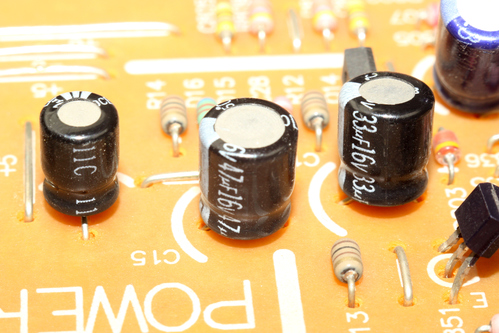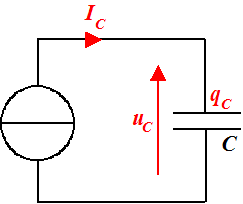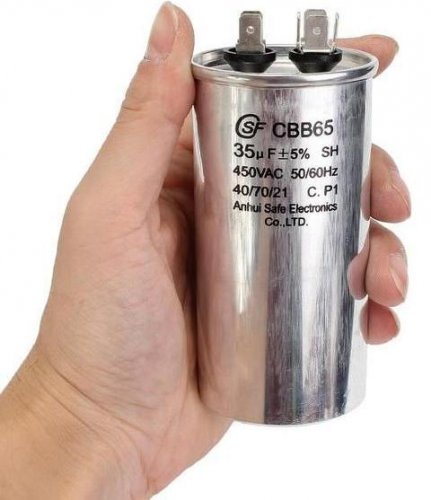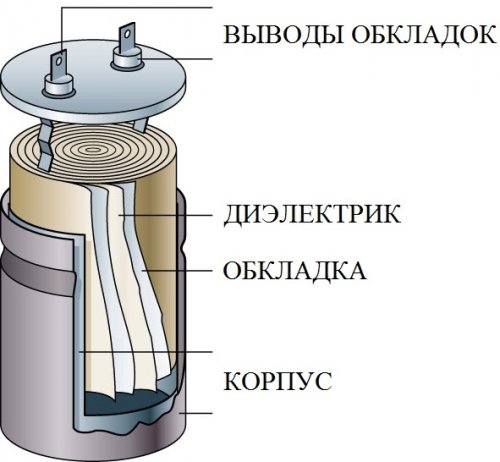Energy of a charged capacitor, the use of capacitors
Metals are excellent conductors of electricity. They conduct electricity because they have free electron carriers with no electrical charge. And if a potential difference is created at the ends, for example, of a copper wire with the help of a constant source of EMF, then an electric current will arise in such a wire - electrons will come forward from the negative terminal of the EMF source - to its positive terminal.
On the contrary, dielectrics are not conductors of electric current, since there are no free carriers of electric charge in them. Positive and negative charge carriers in dielectrics are interconnected and form so-called electric dipoles, which in an external electric field can only rotate, but are unable to move translationally under the influence of an electric field.
More on this: Differences between metals and dielectrics, and Why dielectrics do not conduct electricity
Take, for example, a piece of dielectric in the form of a PVC pipe (polyvinyl chloride is a dielectric).Cover the outer surface of the tube with cling film and simply pack in more crumpled foil inside so that it touches the inner walls of the tube all around.
If we now take the EMF source, say battery of 24 volts and connect it with the negative pole to the inner foil and the positive pole to the outer, then both parts of the foil will receive a charge of different signs from the battery and an electric field directed from the outside from the inside will act in the entire volume of the PVC pipe wall .
Therefore, in this electric field, the dielectric molecules (PVC) will turn, orient themselves according to the external electric field — the dielectric is polarized so that its constituent molecules turn their negative sides outward — respectively, to the positive electrode (to the foil connected to the battery plus), with their positive sides — inward, to the negative electrode. Let's remove the battery.
The positive charge remains on the outer foil, as it is still held by the negatively charged sides of the PVC molecules facing outward, and a negative charge on the inner, as it is held by the positive sides of the dielectric molecules, which have turned inwards. Everything happened in full accordance with the law of electrostatics.
If you now close the outer and inner parts of the foil with pliers, then at the moment of closure you can notice a small spark: the opposite charges from the plates attract each other and cause a current through the wire (tongs) and the dielectric returns to its original neutral state.
It is safe to say that in this device, consisting of a dielectric tube and two foil plates, when a battery is connected to it, an accumulation of Electrical energy.
Devices with a similar configuration are called — a dielectric enclosed between conductive plates isolated from each other electrical capacitors.
It is interesting:Capacitors and Batteries - What's the Difference?

Historically, the first prototype capacitor, the Leiden Bank, was invented in 1745 in Leiden by the German physicist Ewald Jürgen von Kleist and independently by the Dutch physicist Peter van Muschenbrück.
The energy of a charged capacitor depends on the voltage (potential difference between the plates) to which it is charged, since we are talking about the potential energy of opposite charges on the plates separated from each other.

Therefore, this energy is equal to the work that the electric field of these charges will do when they attract each other (or that the source did when they were separated during the charging of the capacitor). The elementary work of moving an elementary part of the charge from one plate to another is equal to:

Capacitors of different configurations, when charged with the same amount of charge, will experience different potential differences between the plates. It can also be said that for different capacitors, different voltages applied to the plates will result in a quantitatively different charge.
In practice, this means that each capacitor has a certain constant value, a characteristic that characterizes that particular capacitor, related to its configuration, the shape of the plates, the dielectric constant of the dielectric, etc. This parameter is called electrical capacity C. The charge on a capacitor q is related to the potential difference between its plates U as follows:

Therefore, the expression for the total energy of the charged capacitor, once integrated, can be written as follows:

Today, capacitors are used in various fields of science and technology: as electrical energy storage devices, as filters for smoothing waves in power supplies, during control RC circuits of electronic devices, in reactive power compensation devices, in induction installations and radio devices as part of an oscillating circuit, in powerful pulse generators, in electromagnetic accelerators, in air humidity meters, etc.
For more details see here:Why are capacitors used in electrical circuits?


